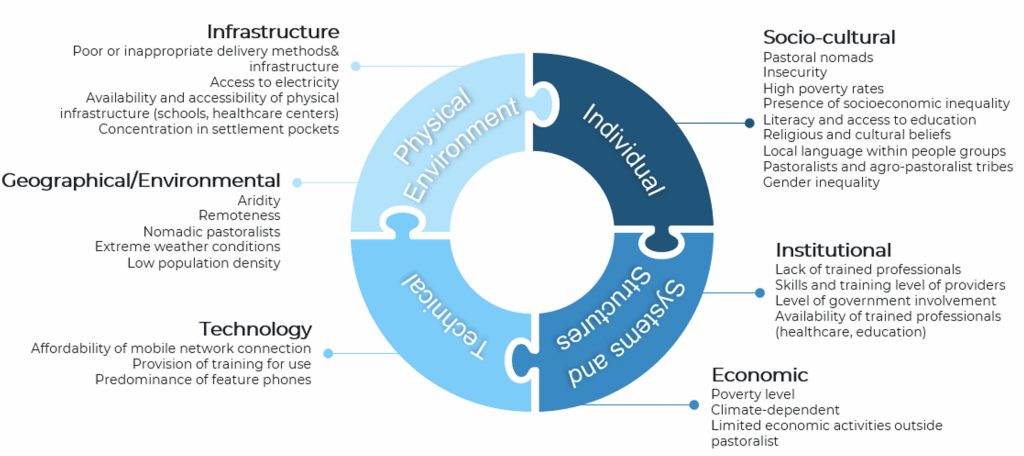EDITORIAL TEAM: Carolina Rojas, E4C Expert Fellow; Mariela Machado, E4C Program Manager; Grace Burleson, E4C Research Manager
DISCLAIMER: Any views and/or opinions expressed in this post by individual authors or contributors are their personal views and/or opinions and do not necessarily reflect the views and/or opinions of Huawei Technologies or iGov Africa.
Click here to view the full report.
The northern region of Kenya, which is arid and semi-arid in nature, forms 70% of the total landmass in the country and is one of the least developed regions of Kenya. Although Kenya is an African leader in ICTs and technology in cities such as Nairobi and Mombasa, the northern region has limited network coverage and where available, is limited to 2G level. Poverty levels are also high, further increasing barriers to technology implementation. This research sought to investigate the ICT landscape in Northern Kenya and investigate opportunities for digital technologies in the region, majorly in the fields of Education, Agriculture, Health and Jobs.
In partnership with Huawei and iGov Africa, Engineering for Change Fellows performed an ICT landscape analysis in Kenya, with a focus on Northern Kenya. Desk research included the analysis of news articles, research reports, government policies (e.g., the Kenya Vision 2030, the Kenya Digital Economy Blueprint, the Vision 2030 Development Strategy for Northern Kenya and other Arid Lands, and the Third Medium Term Plan 2018-2022), and other online-available materials. Furthermore, fellows conducted fourteen (14) semi-structured interviews with stakeholders in the ICT sector, specifically those with expertise in agriculture, education, health and income generations. Interviewed practitioners had a variety of different backgrounds such as social enterprises, policy makers, county government employees, community members and innovation hubs participants. Data from both desk research and interviews were analyzed and organized for claims and themes.
The challenges that the region faces include less developed infrastructure, low levels of education and limited exposure to opportunities that digital technologies can offer. There are limited solutions targeting the region and innovators venturing into the region have to overcome several cultural barriers. However, there are a few digital solutions that have been successfully deployed in the region and there are several positive trends that promote investment and innovations that target Northern Kenya.
Through desk research and expert interviews, we found out that innovators working in Northern Kenya need to tailor their solutions to be suitable by making them less power intensive or taking advantage of solar power, making them simple for use with basic phones, allowing them work offline and also understanding the complex social factors that may affect the adoption of their solutions. There were also various trends that promote innovation in the region, including the devolved governments, favorable policies and collaboration between different stakeholders in the region.
Incubation hubs would also play a major role in the success of innovators in Northern Kenya by providing them with the space for collaboration and networking, as well as helping increase the skills of the young people in Northern Kenya. While there are not many digital solutions targeting Northern Kenya, we found several opportunities within areas of agriculture, education, health and income generation.
Key considerations for ICT solutions in Northern Kenya
Click here to view the full report.
This research was completed as part of the 2020 E4C Fellowship program. Learn more about the Fellows who worked on this research collaboration by connecting with them on LinkedIn: Jacob Mugendi, Gustavo Valbuena, and Carolina Rojas.


No Comments.